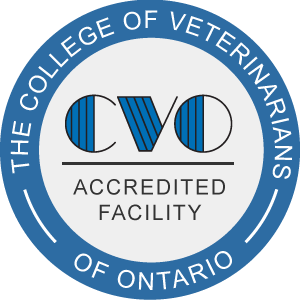Amlodipine
Why has my veterinarian prescribed this medicine?
Your pet has been prescribed amlodipine, a calcium channel blocker used to treat hypertension.
Adverse effects:
Adverse effects occur infrequently in cats, and can include the development of azotemia, lethargy, hypokalemia, reflex tachycardia, and weight loss.
In dogs, reversible gingival hyperplasia has been reported when amlodipine has been used long term.
Storage and handling:
Store at room temperature, in tight, light resistant containers.
Please see the prescription label for dosing information and means of administration.
Always follow the label instructions. Never administer any medication unless prescribed by a veterinarian. Keep out of reach of children.
Plumb, D. C. (2015). Plumb’s Veterinary Drug Handbook, 8th edition. accessed via Veterinary Information Network; vin.com
Extra-label drug use
Extra-label drug use, also referred to as “off-label use” refers to the use of a drug approved by Health Canada in an animal in a manner not in accordance with the label or package insert with respect to species, indication, dose, duration, and route of administration.
A drug used in an extra-label manner does not have proven safety or efficacy characteristic based on its intended use.
The availability of approved veterinary drugs for the species being treated is always considered before prescribing medication in an extra-label manner.
With the limited approved veterinary drugs, extra-label drug use often involves the use medications made for other species (including humans) in our pets.
Compounded medications
Your pet has been prescribed a compounded medication.
A compounded medication is one in which an approved drug has been manipulated to produce dosage, form, or concentration other than that which is provided for in the directions for use on the label. This can include:
- Combining two or more drugs to create a new drug.
- Diluting a drug other than according to the instructions on the label.
- Mixing to administer by a different route than is recommended on the label, or directions for use.
- Converting an approved medication into a different form (i.e.: tablet to a liquid, splitting one capsule into two capsules).
- Adding an unapproved non-drug substance (i.e.: a flavor base).
Compounded medications are most often dispensed when there is a therapeutic need for a drug, and there is no approved drug in the appropriate form for dosing.
Unlike licensed veterinary drugs that undergo a strict legislated approval process by Health Canada, compounded drugs are not tested or approved by Health Canada, and their use may be associated with greater risk. The efficacy of the drug when compounded is not necessarily known.
There can be risks associated handling these products. Please see the prescription label for specific instructions on safe handling of the medication dispensed today (if applicable).
At Bayview Village Veterinary Clinic, our compounded medications come from an accredited Ontario pharmacy with a strict quality control program. We are confident in the safety and efficacy of the medications compounded at this pharmacy.
© Copyright 2025 LifeLearn Inc. Used and/or modified with permission under license. This content written by LifeLearn Animal Health (LifeLearn Inc.) is licensed to this practice for the personal use of our clients. Any copying, printing or further distribution is prohibited without the express written consent of LifeLearn. This content does not contain all available information for any referenced medications and has not been reviewed by the FDA Center for Veterinary Medicine, or Health Canada Veterinary Drugs Directorate. This content may help answer commonly asked questions, but is not a substitute for medical advice, or a proper consultation and/or clinical examination of your pet by a veterinarian. Please contact your veterinarian if you have any questions or concerns about your pet’s health. Last updated on Nov 24, 2021.


